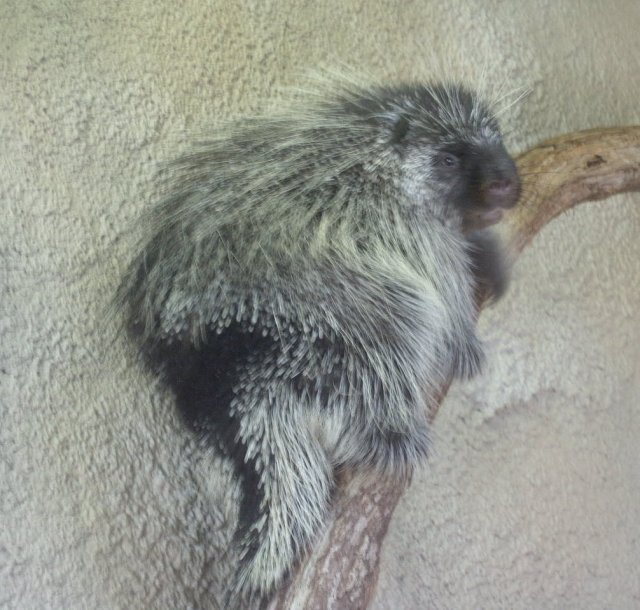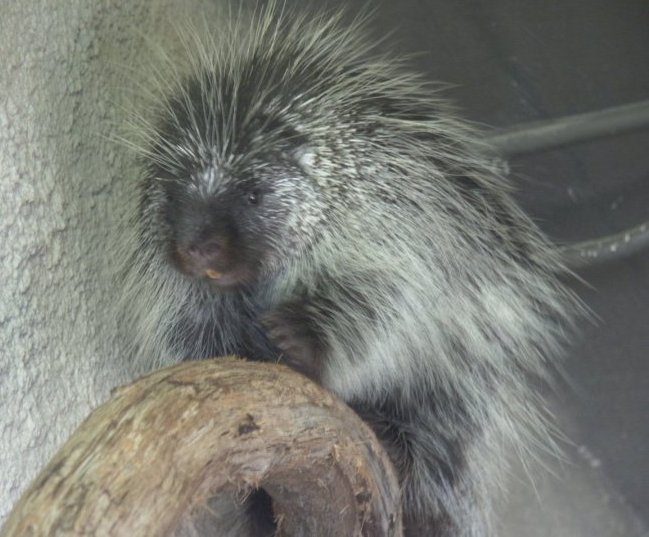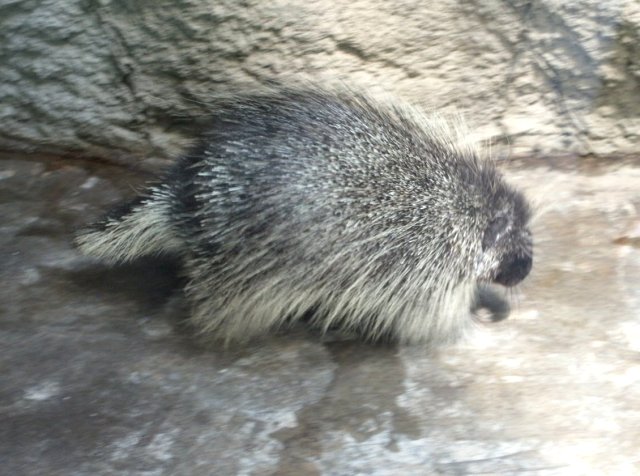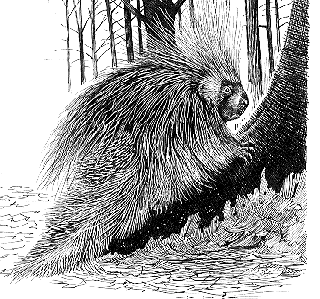| Scientific Name: Erethizon dorsatum | |
| Geographical Range: North America, Alaska, northern Mexico. | |
| Habitat: coniferous, and mixed forests, open tundra, rangeland, and deserts. | |
| Diet in the Wild:entirely vegetarian, evergreen needles, tree bark, buds, tender twigs, roots, stems, leaves, flowers, berries, nuts, and other vegetation. Porcupines are also known to gnaw on bones and antlers from the ground due to their high mineral content . | |
| Conservation Status: No special status | |
| Location in the Zoo: Texas Wild | |
|
|
|
| Physical Description:
Coloration of common porcupines is usually dark brown. The dorsal region of the porcupine is covered with thick, sharp, barbed quills, which are distributed among stiff guard hairs and wooly underfur, however there is variation in the color of a porcupine's hair throughout its geographic range. Most porcupines weigh 3 to 7 kg. but a large male can weigh up to 18kg. Porcupines have heavy bodies with small heads, small ears, short legs, and a short thick tail. The animal's feet are heavy with naked soles. |
Social Organization::
Solitary, but some may den together in the winter.  |
| Special Adaptations:
The front feet have four toes while the hind feet have five toes. Each toe has a strong curved claw this is an adaptation to help the porcupine in his forage for food. Because the porcupine cannot run fast nor appears very intimidating in size or appearance another special adaptation of the porcupine is its quills which are to help the porcupine defend itself from wouldbe predators. The number of quills on each porcupine may exceed 30,000. Each one of the modified hairs is tipped with microscopic barbs that cause the quill to be continually driven into the muscle of predators. The longest quills are located on the animal's rump; the shortest are found on the cheeks. |
|
Reproductive Behavior: Females become mature at about 18 months. A very interesting and detailed courtship takes place involving extreme vocalization, a very elaborate and somewhat comical dance, and then after the dance the male showers the female with urine. Females bear single precocial offspring, or rarely, twins, after a gestation period of 7 months. |
The Animal at the Zoo:
|
| Page Author:
Jana Moss; email address- janaelizabeth@hotmail.com Sources and Links: |
|


